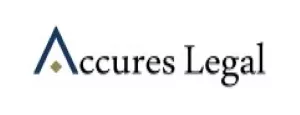Introduction
In that is trying to open different doors of inventions in the scientific community from RNA-Cancer vaccines to genetically modified organisms. The Questions is whether these scientific inventions are patentable or not? It has always been an interesting topic for debate.
The riveting issue is to be able to distinguish between naturally existing genetics and the human altered genes. To get a better idea of Indian laws around patenting DNA related Inventions. In this article we will explore the complexities of patenting DNA related inventions, in India. We will delve into the guidelines, legal interpretations and recent case studies that have shaped this evolving field.
Genetic Sequence Patents:
Let us deep dive into what DNA related inventions are?
The DNA related invention can be:
- mRNA which is encoded by the DNA to express a protein – mRNA cancer vaccine patented by ModernaTx Inc (JP2023024669A)
- Oligonucleotides – Antisense Oligonucleotide Patented by Translate Bio MA Inc (AU2019200789B2)
- Proteins or Polypeptides -Process of Production of an enzyme product (US8765442B2)
- DNA markers – DNA marker which determines seed purity patented by CSIR (US6528265B2)
- Recombinant DNA (Recombinant Vectors or Plasmids) – Recombinant Plasmid patented by Japanese foundation for cancer research which hold almost entire region of human interferon fibroblast messenger RNA
- cDNA (Complementary DNA) – cDNA copy of BRCA1/2 patented by Myriad in 1994 and 1995 but was revoked the patent rights due to the "natural phenomenon"
- Modified Organism on a genetic level like Modified fungi, plants and animals. – The first transgenic animal patented dates from 1988, Oncomouse susceptible to producing tumor by DuPont.
Navigating the Indian terrains of DNA- related Inventions
India's perspective became evident when the Draft Patent Practice and Procedure Manual 7 was introduced in 2005. This manual specifically addressed advancements in biotechnology and pharmaceuticals. It highlighted that patents could be pursued for materials such as DNA and Plasmids along with their production methods as long as there was significant human involvement in the processes. Additionally the document clearly stated that Genetically Modified Organisms (GMOs) were considered patentable under section 3(j). However the subsequent edition of the Manual in 2008 known as Draft Manual8 removed this section without providing an explanation.
Instead it introduced the concept of "unity of invention " which offered avenues for protection. This principle encompassed gene sequences or amino acid sequences that demonstrated novelty, innovation and industrial applicability. It also covered techniques for expressing these sequences and Immunoglobulins designed to target proteins or sequences. Furthermore kits derived from these antibodies or sequences were included within this extended scope.
Finally the finalized version of the Manual of Patent Practice and Procedure published in 2013 eliminated the requirement for " intervention." To effectively navigate these considerations it is crucial to stay updated with evolving patent regulations.
Guidelines for Patentability of biotechnology Inventions:
According to Guidelines for examination of biotechnological application for patent, 7.2 or Indian Patent Act, Section 2 (1)(j)
A DNA related invention has to be novel which means it is new to the world, not known by anyone before filing of patent ; Inventive – Not obvious to the relevant community or experts in the field and has Industrial application,use in real world, in order to be patented.
But is that it? Does that mean Human DNA is patentable? A change in a human DNA sequence patentable? The answer is No and No. A human DNA is a natural source sequence hence cannot be patented and a single change in DNA sequence results in no to minimal changes in the output, if not in the specific region of DNA.
Judicial Decisions in India:
Examples are the best way to understand a topic. Here are some judicial Decisions in India regarding Genetic patent;
- Patenting of 'Genetically stable JEV cDNA based on Japanese encephalitis viruses', which is a cDNA, was granted patent under section 2 of Patent Act, 1970.
- In 2019, Monsanto Technology LLC v/s Nuziveedu Seeds Ltd, where the plaintiff claimed that Defendant infringed biotechnology patent rights of the Monsanto Technology LLC. But the ruling by the bench Said that "Genetically modified plants, genetically modified seeds and gene sequences that provide genetic traits to plants are not patentable subject matter in India"
- In 2001, the case of Dimminaco A.G. v/s Controller of Patent Designs, in which Dimminaco A.G. applied a patent for a method of concoction of a live virus vaccine, which was rejected on the grounds of not an invention as per Patent Act, 1970, section 2 (j).
Conclusion:
As patenting inventions around DNA is a complex topic to understand, India Patent systems has given insights of what it could be like through its judicial decisions. The few things we should always keep in mind is Novelty, Inventiveness and Industrial applicability are its prime pillars. The delicate balance between fostering innovation and preserving natural genetic resources is a challenge India continues to navigate. The journey towards defining the patentability of DNA-related inventions in India is far from over, making this a subject that will continue to spark debate and drive progress in biotechnology and intellectual property rights.
Reference: https://ipindia.gov.in/writereaddata/Portal/IPOGuidelinesManuals/1_38_1_4-biotech-guidelines.pdf
The content of this article is intended to provide a general guide to the subject matter. Specialist advice should be sought about your specific circumstances.



